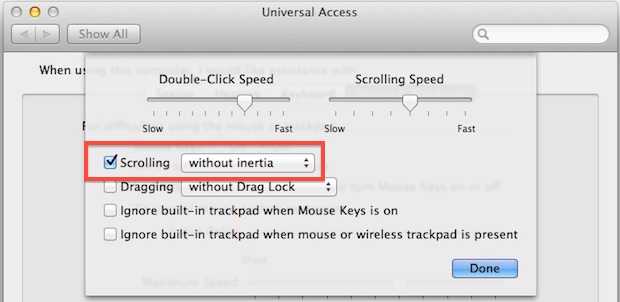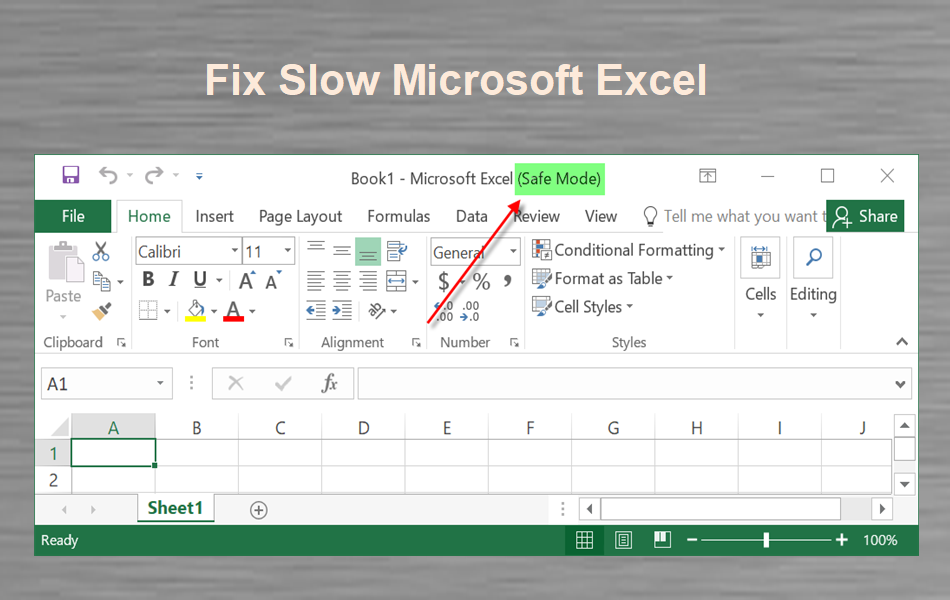- Mac Scrolling Windows 10
- Scrolling In Office For Mac Is Slow Cooker
- Scrolling In Office For Mac Is Slow Jams
Scrolling using the scroll bar is better than scrolling with the mouse 2. Moving through the workbook using the arrow keys is also slow 3.
Too often people upgrade only to find their problems begin, or persist.
- MS Office 2013 requires at least 2 GB of memory and 2 CPU. Please check this requirements in the virtual machine configuration Hardware CPU & Memory. Open virtual machine configuration Switch to Hardware tab Mouse & Keyboard Check/Uncheck Smooth scrolling.
- A couple of tweaks to your trackpad settings will fix the scrolling error for you. It has something to do with the way Java is loaded. Anyways, you can try the fixes shown here.
- Scrolling is unbearably slow. I'm going to have to temporarily try Open Office again. Edit flag offensive delete link more Comments. I can confirm that Libreoffice 5.7.3.2 also suffers from this problem. Scrolling up (toward the top of the page) is ok, but scrolling down (toward the bottom of the page) is ridiculously slow!!
If you need help with a slow Mac running a Mac operating system, please be prepared to answer these questions, or find out how to get the answer to these questions.
Etrecheck, a software written by one of our fellow contributors, is a software that has been useful in isolating many of the issues below:
Look at these troubleshooting steps. Find
1. If MacKeeper was installed, and if it is, remove it with the instructions in this tip:
2. If any other system cache cleaner is installed. If there is, contact the vendor on how to remove it.
3. If the possibility your hard drive is over 85% full exists.
4. If Spotlight hasn't finished indexing. (does not apply to 10.3.9 or earlier). Clicking on the icon in the upper right that looks like:
(it may have a different color), will reveal if Spotlight is indexing, or is ready to search. Going to Apple menu -> System Preferences -> Spotlight -> Privacy will show if a specific folder or drive is ignored by your last Spotlight index.
5. If you are attempting to multitask with a Time Machine backup going on. (does not apply to 10.4.11 or earlier)

6. If permissions are damaged. Often a problem when using pre-2006 Classic environment on PowerPC Macs. See #10 how to identify Macs.
7. If third party software or drivers hasn't been tested with your installed operating system.

8. If You migrated data from a different Mac CPU type. I.e. from PowerPC to Intel, or Intel to PowerPC. See 10 on how to identify Macs.
9. If energy saver isn't giving some peripheral problems, because the peripheral doesn't understand low power mode.
10. If the possibility exists that there is marginal hardware on
Intel Macs or PowerPC Macs
Use: https://discussions.apple.com/docs/DOC-6413 to determine if you have PowerPC or Intel.
11. If you have had 4 language screens forcing you to restart your Mac, that's significant, and indicates what is known as a kernel panic.
Usually an issue relating to the hardware, though sometimes a directory may be damaged, or sometimes a bad or incompatible driver is installed.
Running the hardware test for Intel Macs or PowerPC Macs
will indicate if some RAM is bad, but not all RAM. Any errors found with it are significant.
12. If you don't have a current system, find out if a website you are visiting needs a newer plugin for Java, Flash, etc...(10.7.2 or earlier do not run a current Java. 10.6.7 or earlier do not run a current Flash. But updating to those is only necessary for a few websites. Check before updating to ensure you don't make yourself incompatible in other ways). Before updating to 10.7 or later, be sure to read this tip about compatibility first: https://discussions.apple.com/docs/DOC-6271
13. If your data is backed up from before or after the upgrade, and we can isolate other issues. Without a backup, we can't say if the solution might be worse than the problem.
https://discussions.apple.com/docs/DOC-1992 - tells you how to backup a functional system.
https://discussions.apple.com/docs/DOC-1689 - tells you how to recover a system that is not functional or able to boot so at least other issues can be
isolated.
14. Slowdown to internet applications may be due to third party router firmware not being up to date, too many machines using the router, an insecure router not using WPA2 connectivity (802.11b original Apple Airport can't use it, and it is better to get a WiFi ethernet bridge with at least 802.11g), proxy servers, and bad DNS issues which http://www.opendns.org/ can resolve. Additional WiFi related issues are documented on this tip:
15. A bad iTunes install, or one that isn't properly updated for the system may cause slow down. If you are trying to isolate that as a possibility, note the path to the iTunes Helper which is loaded in your System Preferences -> Accounts (Users and Groups in some versions of Mac OS X), Login Items (startup items in other versions of Mac OS X)
/Applications/iTunes.app/Contents/Resources
You can use the Finder's Go to Folder command in the Go menu to reload that program after removing it from your Login Items and troubleshooting the situation.
16. Peer2peer sharing software, torrent software, both make your machine into a software server. This can slowdown your overall internet. Do not get software from such sources, as most are illegal. If you have trouble finding software for your operating system, visit http://www.roaringapps.com/ if using Mac OS X 10.7 or later, or ask on this board where to find software that is legal that does what you need.
17. If your Mac is backed up, then's the time to see if a directory repair is necessary:
18. Often times, you will see the system slowdown and get a spinning color circle indicating it is busy. After a certain amount of time, if you can risk losing the data that has not been saved on the application, force quitting the application with command-option-escape key sequence is a possibility.
If command-option-escape does not work, it may indicate one of the aforementioned issues is happening. Command and Option keys may look like some variation of:
On non-Apple keyboards the Windows key usually takes the place of the Command key, and the Alt key usually the Option key. Though Microsoft has made a patch for its keyboards that forces the two keys to switch their assigned Apple keystroke, since they are in reverse orientation of the Apple keyboard. The Escape key is typically just labelled ESC.
19. You may not experience any of the above issues with games or high end graphics applications. The graphics processor unit (GPU) recommended by the developer should be the one you have installed on your computer. Any others, and speed may be an issue with those programs. It is not to be confused with RAM or your CPU.
20. Migrating data from PowerPC Macs. See first #10 to see if you had a PowerPC Mac you were migrating from. If you did, you may have brought over some drivers the Intel Mac does not understand in the Migration or Setup Assistant. If there is a chance this may have happened, you should see this tip on migration which avoids the issue:

21. Notifications can slow Mac OS X 10.9 down. Go to Apple menu -> System Preferences -> Notifications to disable those notifications you don't need.
22. iCloud syncing (in 10.7.2 and later) can slow things down. Manage iCloud through the System Preferences to ensure syncing only happens when you need it. iSync in Mac OS X 10.6 and earlier can also slow things down when you don't need it.
Starting with OS X 10.7 (Lion) Apple changed some fundamental ways that scrolling works. Specifically, the scrollbars are hidden until one moves the cursor on top of the scrollbar area, then the scrollbars appear. Additionally, the scrollbars no longer have arrows at the ends to let you slowly scroll up and down. Here are some suggestions to help address both of these changes.
When I sit down at a Mac running OS X 10.7 (Lion) or OS X 10.8 (Mountain Lion), one of the first things I do it make the scrollbars appear all the time. I don’t like the fact that Apple hides them. Presumably Apple hides them to save screen space, but I don’t think scrollbars take up undue space. More importantly, I like to be able to glance at the scrollbars and use them as a guide to my location in a document. For example, if the scrollbar is almost at the bottom of the window then I know that I’m almost at the end of the document. Here’s how to make your scrollbars visible all the time:
- Click on the Apple menu and select System Preferences
- In the System Preferences window, click the General icon near the upper left corner.
- Locate the “Show Scroll Bars” section and select Always.
- Click the red dot in the upper left corner to close the System Preferences window.
Now, your scrollbars will appear on the right-hand side of documents and windows. You may notice that Apple has removed the small arrows that used to appear near the top or bottom of scroll bars. These arrows could be clicked on to slowly scroll up or down in a document. I presume that Apple removed them since they want users to use an Apple Magic Mouse 2 or Magic Trackpad 2 or the built-in trackpad on a Mac laptop. All of these devices let one scroll by dragging two fingers up and down. This is fine for a 35-year-old who has steady hands, but it’s not a great option for users whose hands are unsteady due to a disability or aging. Some of these users tend to drag the scroll bar up or down to scroll through a document and, sometimes, scrolling occurs too fast. Recently, I worked with a client who wanted to slowly scroll through her iPhoto Library to find a particular photo. The scrollbar didn’t offer enough precision of movement.
Mac Scrolling Windows 10
Here are a couple of methods one can use to slow down the speed of scrolling on a Mac. The easiest to implement method is to hold down the option key as one drags the scroll bar up or down. Another method requires some set up. Here are instructions:
Scrolling In Office For Mac Is Slow Cooker
- Click on the Apple menu and select System Preferences.
- In the System Preferences window, click on the Universal Access icon if your Mac is using OS X 10.7. If your Mac is using OS X 10.8 or 10.9, click the Accessibility icon.
- Click the Mouse and Trackpad icon.
- Then, depending upon whether you use a mouse or a trackpad, click either the Mouse Options or Trackpad Options button.
- Adjust the scroll speed slider to your preferred speed.
- Click the red dot to close the System Preferences window. Your changes should take effect immediately.
Scrolling In Office For Mac Is Slow Jams
Apple has written illustrated instructions on how to change the scrolling speed.